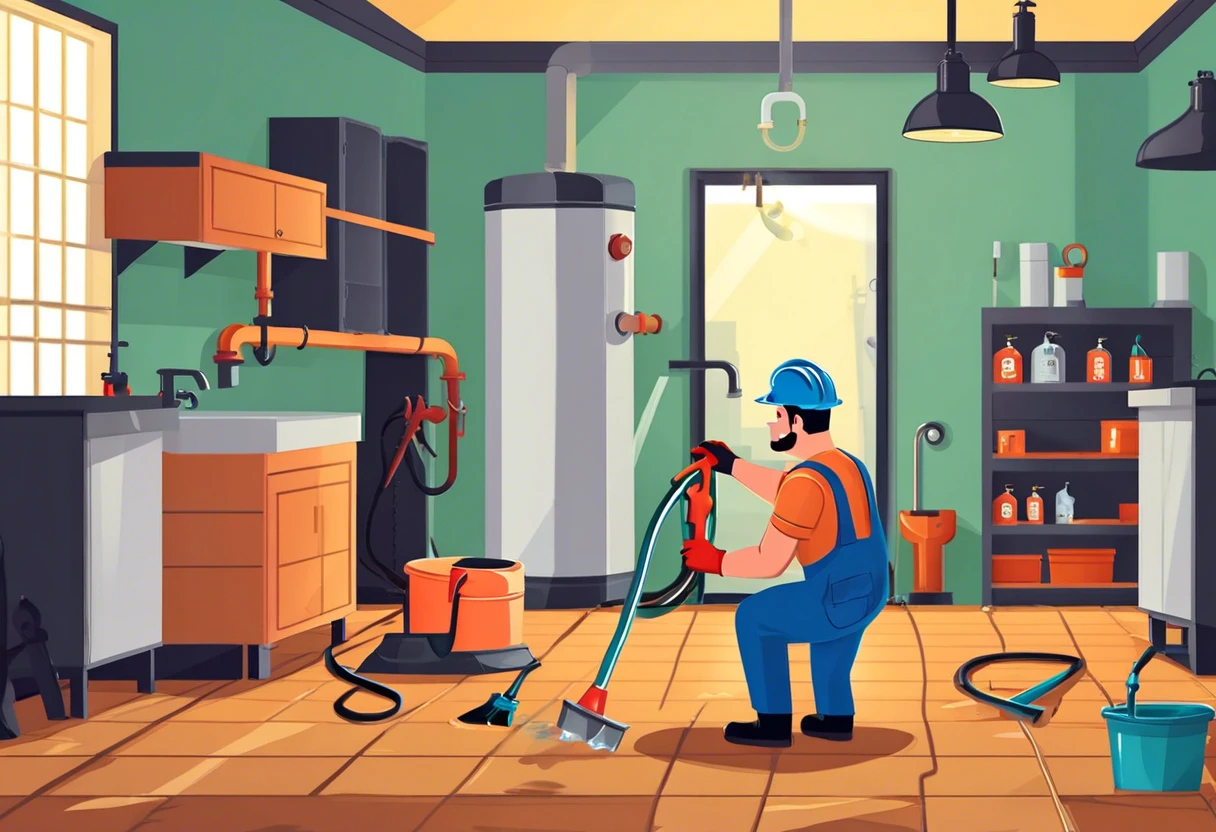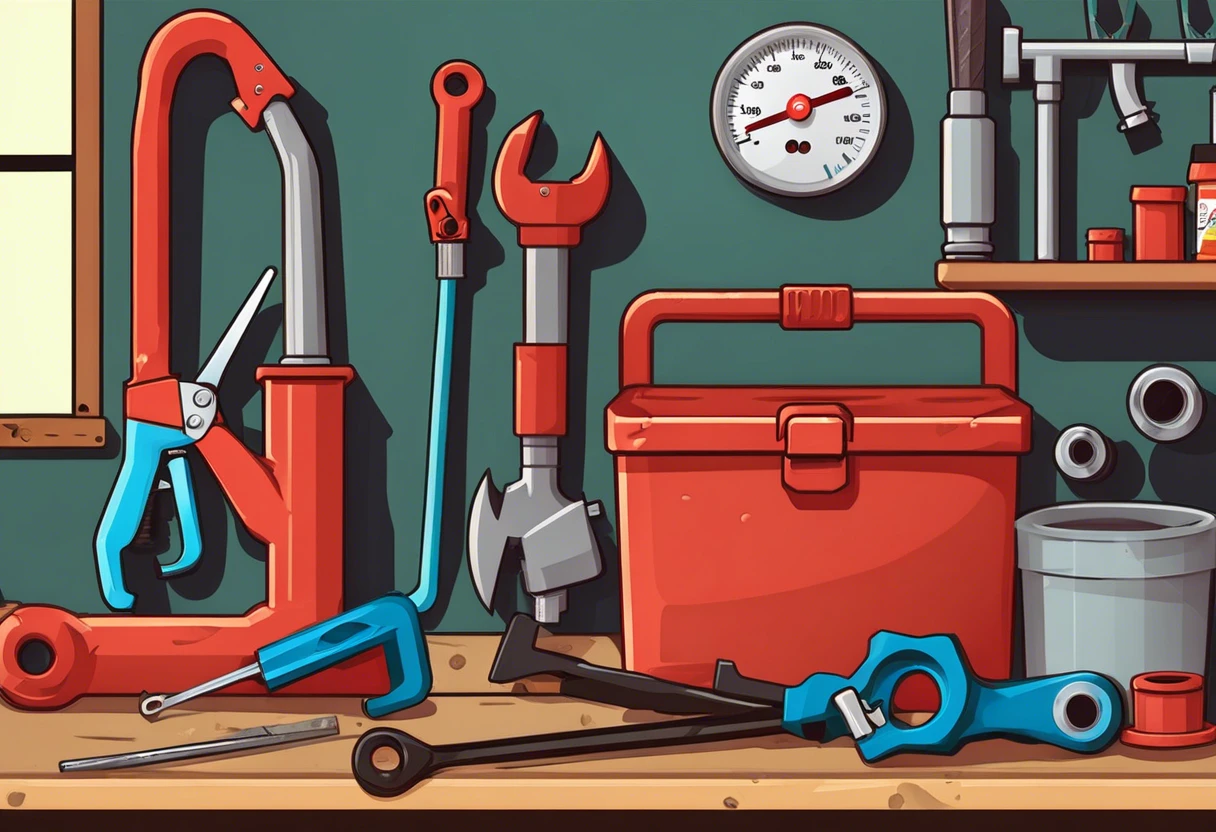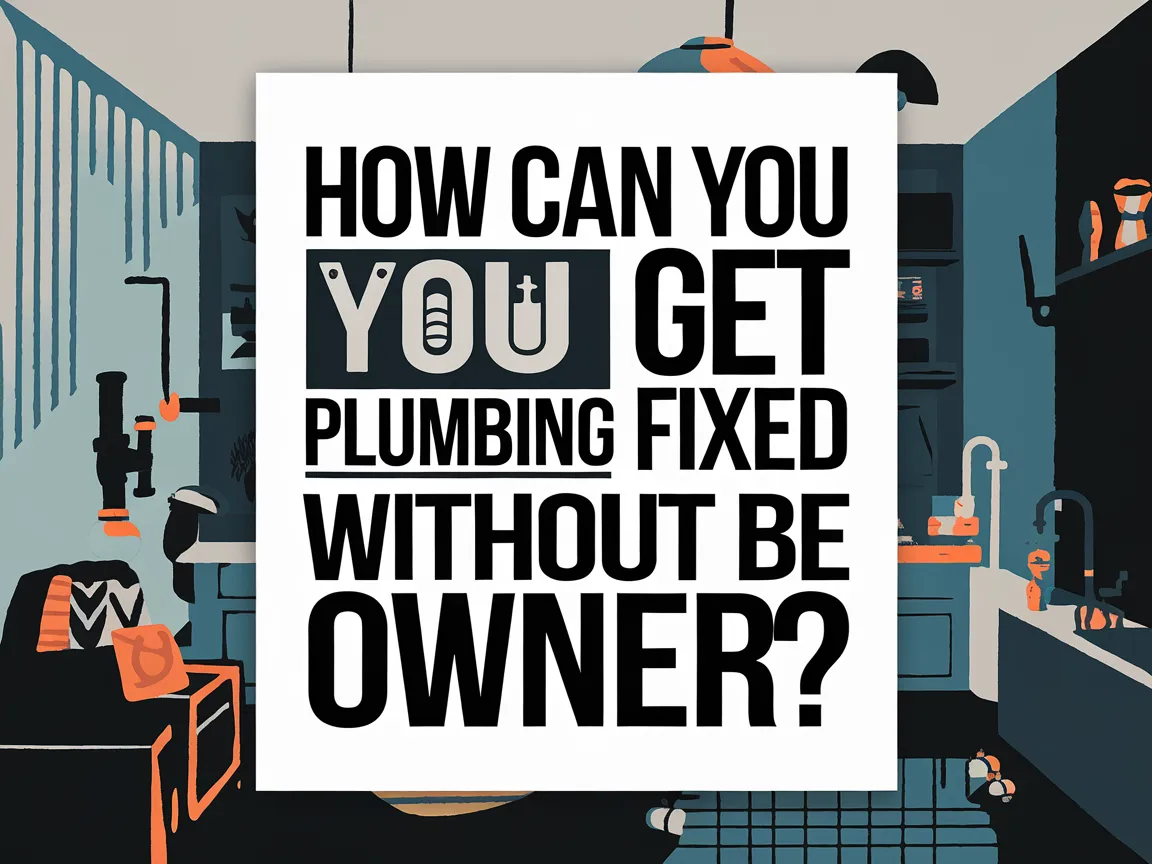Is Plumbing Dangerous? Understanding Risks, Safety, and Costs
Published on: March 19, 2025 | Last Updated: March 19, 2025
Written By: anaheimplumbers
Hey there! If you’re contemplating the dangers of plumbing, or perhaps you’re just curious about whether fixing that leaky faucet could lead to bigger issues, you’re not alone. Such thoughts can be nerve-wracking, especially if you’re situated in the beautiful area of Anaheim Hills. But don’t fret; I’m here to provide clarity!
Trust me, I understand. The first time I picked up a wrench, I felt a wave of excitement mixed with a twinge of fear about the potential pitfalls. Over the years, I’ve tackled numerous plumbing projects—from unblocking drains to installing new fixtures—and learned invaluable safety precautions along the way. Knowledge is power, especially in plumbing, so let’s take a closer look at whether plumbing is genuinely dangerous.
This guide aims to equip you with essential insights into potential plumbing hazards, critical safety precautions, and when it’s wise to call in the professionals. We will also consider the costs associated with plumbing services and repairs. Ready to dive in and discover if plumbing is truly dangerous? Let’s get started!
Page Contents
- 1 Is Plumbing Dangerous?
- 2 Key Takeaways About Plumbing Safety
- 3 Understanding Plumbing Hazards and Safety Precautions
- 4 Hidden Dangers in Plumbing Work
- 5 Ventilation Challenges in Plumbing
- 6 When to Consult Professional Experts for Plumbing Matters
- 7 Frequently Asked Questions About Plumbing Safety
- 8 Final Thoughts on Plumbing Risks and Safety Practices
- 9 Additional Resources for You:
Is Plumbing Dangerous?
The short answer is: it depends. While most plumbing tasks can be carried out safely, specific conditions such as working with pressurized systems or handling electricity can introduce significant risks. Always reflect on your skill level and appropriate safety gear before starting any project. Often, hiring a professional is the best approach, especially for challenging tasks.
Key Takeaways About Plumbing Safety
To ensure your plumbing projects proceed smoothly and safely, here’s what you will gain an understanding of:
- Identifying potential dangers associated with plumbing tasks.
- Recognizing common plumbing hazards and preventative strategies.
- Determining when professional assistance is necessary for plumbing issues.
- Exploring costs and considerations involved in safe plumbing services and repairs.
Understanding Plumbing Hazards and Safety Precautions
So, is plumbing dangerous? The answer varies depending on the context. While routine plumbing tasks might appear safe at first glance, there are several hazards that can unexpectedly challenge even seasoned professionals. From high water pressure and problematic drainage systems to the potential for harmful chemical exposure, the risks associated with plumbing can be quite significant. To effectively navigate these challenges, it’s essential to enhance your skills, particularly in how to bid plumbing jobs. Mastering this aspect can greatly improve your approach to managing the inherent risks in the field. For more insights on this process, you can check out this helpful resource.
Common Risks Associated With Plumbing Work
Let’s face it: plumbing comes with a variety of inherent risks that range from manageable to perilous. In Anaheim Hills, I’ve faced situations involving issues like Cactus Drains and Old Town Pipe services. As you begin bidding on plumbing jobs, it’s crucial to assess both costs and risks effectively. For a more refined approach, gaining insights from the Anaheim Hills plumbing blog can be invaluable. Gaining a thorough understanding of these potential hazards will empower you to make informed decisions about your plumbing work.
Tools and Equipment Safety Considerations
When it comes to utilizing tools, safety is paramount. I always wear gloves and goggles, especially when using tools like soldering irons or handling potentially harmful chemicals. Protecting your vision and skin is crucial; a single misstep could lead to serious injury. Rigorously checking equipment and following safety regulations is equally as important—it’s not just about having high-quality tools; it’s also about ensuring they are used correctly and securely.
Preventative Measures for Safe Plumbing Practices
Preventing plumbing accidents is essential. Through my experiences, I’ve learned that being cautious is half the battle. For example, when fixing a leak under a sink last summer, I made sure to have a reliable flashlight—seeing your work area clearly really makes a world of difference. Planning your workspace can help avoid tripping hazards and ensure a smoother process.
Diving deeper into the question of whether plumbing can be dangerous, the answer is undoubtedly yes. There are numerous risks involved, ranging from sanitary hazards to the complexities of working with electrical components. For instance, during fire season, I received a call to address a backflow issue on Sugar Hill, where one wrong move could have led to significant contamination of the surrounding environment. Additionally, when dealing with pool plumbing, it’s essential to know the right materials to use, particularly when it comes to selecting appropriate types of PVC. Understanding what type of PVC for pool plumbing can play a crucial role in eliminating potential dangers and ensuring safety.
Furthermore, the risks associated with gas leaks and the necessity of working in confined spaces underscore that plumbing involves more than merely connecting pipes. I always stress the importance of caution, especially in areas with extensive pipeline networks. It’s vital to remember not to disturb buried lines while digging. Additionally, becoming familiar with the various fixtures is crucial to preventing accidents during installations. Among these fixtures, a lavatory holds significant importance within plumbing systems, and understanding its role enhances your overall awareness of the field. Ultimately, ongoing training is essential; approximately 100 plumbers lose their lives each year in the U.S. due to accidents, highlighting the need for continuous education to remain vigilant about risks associated with gas, fire, and hazardous materials. To further enrich your understanding, feel free to explore more about the essential role of a lavatory in plumbing at what a lavatory is.
In short, understanding plumbing safety hinges on knowledge, practice, and respect for the trade. It is essential for residents across OC to comprehend the associated risks and safety precautions to ensure both our enjoyment and the safety of our clients. One common concern in home plumbing systems is the house trap, which plays a crucial role in waste management. If you would like to deepen your understanding of how a house trap functions in plumbing, take a look at what is a house trap.
Having explored plumbing hazards and essential safety measures, let’s move on to the hidden dangers that can occur during plumbing work.
Also See: Should I Buy a House With Galvanized Plumbing?

Hidden Dangers in Plumbing Work
While plumbing may seem straightforward, hidden dangers abound. Understanding these risks might prevent you from facing unnecessary challenges during your plumbing tasks.
Chemical Exposure Risks
Throughout my plumbing career in Anaheim Hills, I’ve encountered various harmful chemicals. Whether it’s cleaning agents or pipe sealants, exposure to these substances can lead to serious health problems. Here’s a brief overview of specific risks you should be aware of. Alongside these safety concerns, managing plumbing issues also comes with financial considerations. For instance, understanding the costs of tools like a plumbing snake is essential for homeowners tackling stubborn clogs. Renting a plumbing snake can be a practical and cost-effective solution for many. If you’re interested in understanding the expenses associated with this rental option, you can check the rental costs in Anaheim Hills.
- Drain Cleaners: These can cause skin burns or respiratory issues if inhaled.
- Pipe Repair Materials: Some adhesives generate harmful fumes, so working in well-ventilated areas is crucial!
- Heavy Chemicals: Extended exposure can potentially lead to chronic health conditions.
Physical Hazards in Plumbing
Physical hazards are plentiful in plumbing. Heavy lifting, uncomfortable positions, and slippery surfaces are routine. Here are a few common issues:
- Back Injuries: I’ve experienced back pain lifting heavy fixtures—it’s no laughing matter!
- Slips and Falls: Wet floors and scattered tools can quickly result in accidents.
- Confined Spaces: Working in tight environments can introduce unexpected dangers—you never know what you might encounter!
Now that we’ve discussed hidden risks in plumbing work, let’s move on to tackle an essential aspect: ventilation challenges in plumbing systems.
Ventilation Challenges in Plumbing
Ventilation plays a critical role when working in enclosed areas. Insufficient airflow can lead to perilous situations. Here’s why good ventilation matters:
Importance of Proper Ventilation
If you’re facing airflow issues, it can significantly complicate your plumbing tasks. Here’s why:
- Fume Inhalation: Working with chemicals without adequate airflow can be harmful to your lungs.
- Mold Growth: Poor ventilation can encourage mold, which poses health risks if exposure is prolonged.
- Heat Accumulation: Even slight heat in small spaces can lead to dizziness or fainting.
Understanding ventilation challenges is critical. Next, let’s discuss when it is essential to consult professional plumbing experts.
When to Consult Professional Experts for Plumbing Matters
There are times when it’s crucial to enlist the aid of a professional. Recognizing these moments can save you considerable trouble. Seek expert help when facing complicated issues or when simple DIY solutions won’t suffice.
Have you ever found yourself in a plumbing predicament only to realize that it’s more complicated than you anticipated? From my experience, seeking a second opinion can save both time and money. Professionals possess valuable insights that DIY enthusiasts often overlook, such as identifying areas where deposits accumulate in aging pipes or knowing when to access hidden junction points. Additionally, it’s important to consider how certain household products can impact your plumbing system. For instance, many people frequently wonder about the potential issues caused by Charmin toilet paper. You can explore this topic further in our article on Charmin clogging plumbing, which provides detailed insights and solutions.
Benefits Of Hiring a Local Anaheim Hills Plumbing Expert
One major advantage of hiring a local plumber is their familiarity with the specific plumbing challenges prevalent in the area. For instance, I recall a project where collaborating with local experts offered valuable insights into navigating the complex plumbing codes enforced in Anaheim Hills. Additionally, understanding the longevity of PVC plumbing in Anaheim Hills can empower you to make informed decisions about renovations or repairs that require durable, long-lasting materials. If you’re curious about this subject, you can find more details on the PVC plumbing lifespan here.
Moreover, local professionals ensure compliance with all plumbing regulations—that’s essential in avoiding compliance issues down the line. Consider reaching out to experts like those at Anaheim Hills Plumbers, who possess the necessary local knowledge and expertise.
With this understanding of when to consult professional plumbing help, let’s shift focus to common questions regarding plumbing safety.

Frequently Asked Questions About Plumbing Safety
It’s common to have concerns about plumbing safety and the associated risks. Here are frequently asked questions that can help clarify these matters.
What Are the Risks Of Being a Plumber?
The risks associated with being a plumber include exposure to harmful chemicals, potential injuries from heavy lifting, and hazards from working in confined spaces. Each of these aspects poses risks to a plumber’s overall safety.
Is Plumbing or Electrician More Dangerous?
When comparing plumbing to electrical work, it’s clear that both professions carry their own set of unique risks. Evaluating these hazards helps in understanding how each field is perceived in terms of safety. For instance, if you’re dealing with clogs, it’s essential to consider the safe use of specific products. While solutions like Liquid Plumber can be effective, they should never be used in toilets, as this can cause damage to the plumbing system. Instead, it’s prudent to explore safer alternatives. For more information on this topic, you can check out resources that discuss Liquid Plumber compatibility with various plumbing situations.
Is Plumbing a Hazardous Job?
Indeed, plumbing is often classified as a hazardous occupation due to inherent risks such as slips, falls, and exposure to toxic substances. To manage these dangers, it is crucial to implement proper training and adhere to safety precautions within the plumbing industry. Equally important is understanding the various phases that plumbing projects undergo, as this knowledge can enhance both safety and efficiency. By familiarizing yourself with how many phases plumbing projects typically involve, you can effectively plan your work and mitigate associated risks. For a comprehensive overview, you can explore more about the phases involved in plumbing projects here.
Is Plumbing Bad for Your Body?
Indeed, plumbing involves significant physical demands and repetitive motions, which can adversely affect your body if proper care is neglected. This oversight may lead to strain and injuries over time. To effectively manage these risks, it becomes essential to evaluate the potential costs associated with plumbing a house. By doing so, you can plan accordingly and adopt safe practices throughout the process. For more insights into these costs, be sure to check out our detailed cost guide.
What Health Risks Do Plumbers Face?
Plumbers encounter a variety of health risks, including respiratory issues from fumes, skin contact with hazardous materials, and musculoskeletal disorders linked to their physical labor. To mitigate these risks, it is essential for plumbers to take proactive measures. One important aspect of building a successful plumbing career is adequately preparing for and passing the examination. If you’re curious about the difficulties of the certification process, explore the challenges of the journeyman plumber test to better prepare yourself.
How Can Plumbers Stay Safe on the Job?
Staying safe as a plumber involves wearing protective gear, adhering to maintenance protocols for tools, and following established safety procedures. These practices are vital in minimizing injury risks within the industry.
Final Thoughts on Plumbing Risks and Safety Practices
We’ve covered a range of topics, including plumbing hazards, safety precautions, important considerations, costs for services and repairs, when to enlist expert help, and answers to common questions about plumbing safety.
Ultimately, while plumbing poses certain risks, it doesn’t have to be dangerous when approached with the right knowledge and practices. For a quick quote or to connect with professional plumbers in your area, do check our services at Anaheim Hills Plumbers.

